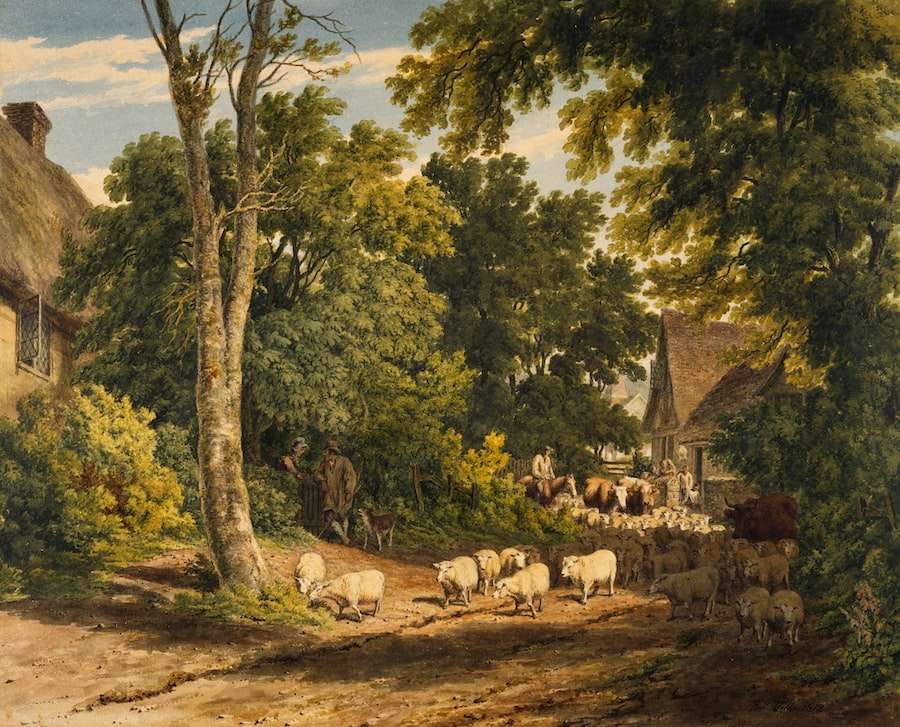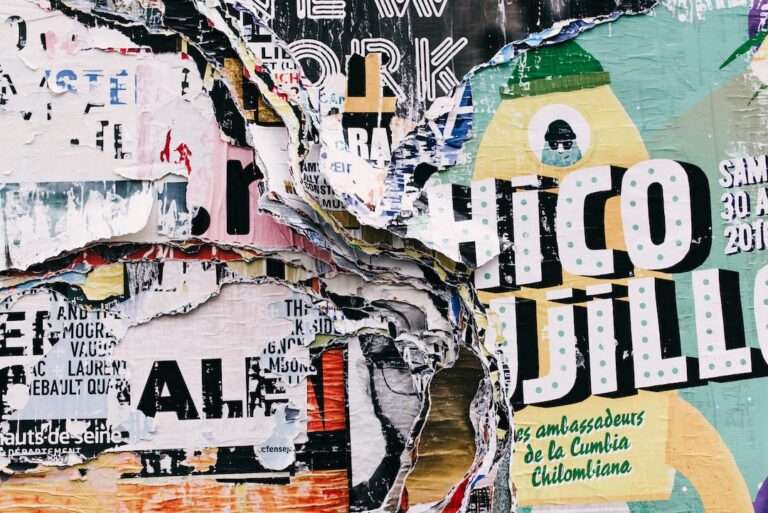Symbolism in Graphic Design Art

Symbolism in graphic design art refers to the use of symbols to convey messages, emotions, and ideas. Symbols are visual representations that carry meaning beyond their literal interpretation. They can be simple or complex, and they have the power to evoke strong emotions and create a lasting impact on the viewer.
The importance of symbolism in graphic design art lies in its ability to communicate complex ideas and concepts in a concise and visually appealing manner. Symbols can transcend language barriers and cultural differences, making them a powerful tool for communication. They can also evoke emotions and create a sense of connection between the viewer and the design.
The use of symbolism in graphic design art has a long history, dating back to ancient civilizations. In ancient Egypt, for example, symbols such as the ankh and the eye of Horus were used to represent concepts like life and protection. In medieval Europe, symbols such as the cross and the fleur-de-lis were used to represent religious beliefs and political power.
The Role of Symbolism in Branding and Marketing
Symbolism plays a crucial role in branding and marketing. Companies use symbols to create a visual identity that represents their brand values, personality, and mission. A well-designed symbol can instantly convey what a brand stands for and create a strong emotional connection with consumers.
One example of successful branding and marketing campaigns that use symbolism is the Nike swoosh logo. The swoosh is a simple yet powerful symbol that represents movement, speed, and athleticism. It has become synonymous with Nike’s brand identity and is instantly recognizable worldwide.
Another example is the Apple logo, which is a symbol of innovation, simplicity, and elegance. The bitten apple has become an iconic symbol that represents Apple’s brand values and its commitment to creating innovative products.
Choosing the right symbols for branding and marketing is crucial. Symbols should align with the brand’s values and resonate with the target audience. They should be memorable, unique, and easily recognizable. A well-designed symbol can help a brand stand out from the competition and create a strong brand identity.
The Psychology of Symbolism in Graphic Design Art
Symbols have a profound impact on human emotions and behavior. They can evoke strong emotions and create a sense of connection with the viewer. The psychological impact of symbols is rooted in our cognitive processes and our cultural and personal associations.
Symbols have different meanings and associations in different cultures. For example, the color red can symbolize love and passion in Western cultures, while it can symbolize luck and prosperity in Chinese culture. Understanding these cultural associations is crucial when designing symbols for a global audience.
Symbols also have personal associations that vary from individual to individual. For example, a rose may symbolize love for one person but may remind another person of a painful memory. These personal associations can influence how symbols are interpreted and the emotions they evoke.
Understanding the psychology of symbolism in graphic design art is essential for creating designs that resonate with the target audience. Designers need to consider the cultural and personal associations of symbols to ensure that their designs effectively communicate the intended message and evoke the desired emotions.
The Different Types of Symbols Used in Graphic Design Art
There are various types of symbols used in graphic design art, each with its own meanings and associations. Some commonly used symbols include:
– Geometric shapes: Geometric shapes such as circles, squares, and triangles are often used to represent balance, stability, and harmony. They can also convey different meanings depending on their size, position, and orientation.
– Animals: Animals are often used as symbols to represent specific qualities or characteristics. For example, a lion may symbolize strength and courage, while a dove may symbolize peace and harmony.
– Plants and flowers: Plants and flowers are often used as symbols to represent growth, renewal, and beauty. Different plants and flowers have different meanings and associations. For example, a rose may symbolize love, while a lotus flower may symbolize enlightenment.
– Religious symbols: Religious symbols are used to represent specific religious beliefs and practices. Examples include the cross in Christianity, the crescent moon in Islam, and the Star of David in Judaism.
When choosing symbols for a design, it is important to consider their meanings and associations. Symbols should align with the intended message and evoke the desired emotions. They should also be visually appealing and easily recognizable.
The Art of Creating Effective Symbolic Designs
Creating effective symbolic designs requires careful thought and consideration. Here are some tips for creating effective symbolic designs:
1. Keep it simple: Symbols should be simple and easy to understand at a glance. Avoid cluttering the design with unnecessary details that can distract from the intended message.
2. Use clarity: Symbols should be clear and unambiguous in their meaning. Avoid using symbols that can be easily misinterpreted or have multiple meanings.
3. Consider context: Symbols should be designed with the intended context in mind. Consider how the symbol will be used and where it will be displayed to ensure that it effectively communicates the intended message.
4. Test with the target audience: Before finalizing a design, it is important to test it with the target audience to ensure that it resonates with them and evokes the desired emotions.
Examples of effective symbolic designs include the peace symbol, which is a simple combination of a circle and three lines that has become universally recognized as a symbol of peace. Another example is the recycling symbol, which is a combination of three arrows that represents recycling and environmental sustainability.
The Impact of Color in Symbolic Graphic Design Art

Color plays a crucial role in conveying emotions and messages in symbolic graphic design art. Different colors have different meanings and associations, and they can evoke specific emotions in the viewer.
For example, warm colors such as red, orange, and yellow are often associated with energy, passion, and excitement. They can create a sense of urgency and grab the viewer’s attention. Cool colors such as blue, green, and purple are often associated with calmness, tranquility, and harmony. They can create a sense of relaxation and convey a more subdued message.
When choosing colors for a symbolic design, it is important to consider their meanings and associations. Colors should align with the intended message and evoke the desired emotions. They should also be visually appealing and create a harmonious composition.
The Evolution of Symbolism in Graphic Design Art
Symbolism in graphic design art has evolved over time, influenced by different art movements and cultural shifts. In the early 20th century, for example, the Art Nouveau movement embraced organic forms and natural motifs in its symbolic designs. The movement rejected the rigid symmetry of the Victorian era and embraced flowing lines and curves.
In the mid-20th century, the Pop Art movement challenged traditional notions of art and embraced popular culture and consumerism. Pop artists used symbols from popular culture such as Coca-Cola bottles and Campbell’s soup cans to critique consumerism and mass production.
In recent years, symbolism in graphic design art has become more minimalistic and abstract. Designs often use simple shapes and lines to convey complex ideas. This minimalist approach reflects the influence of modernist design principles and the desire for simplicity and clarity in communication.
The Use of Cultural Symbols in Graphic Design Art
Cultural symbols play an important role in graphic design art. They can help create a sense of identity and belonging, evoke emotions specific to a particular culture, and communicate cultural values and beliefs.
Using cultural symbols in graphic design art can be challenging, as symbols can have different meanings and associations in different cultures. It is important to research and understand the cultural context in which the symbol will be used to ensure that it is used appropriately and respectfully.
Examples of how cultural symbols are used in graphic design art include the use of traditional patterns and motifs in textiles and fashion design. These designs often draw inspiration from specific cultures and incorporate symbols that are meaningful to those cultures.
The Future of Symbolism in Graphic Design Art
The future of symbolism in graphic design art is likely to be influenced by technological advancements and changing cultural norms. As technology continues to evolve, new forms of symbolism may emerge, such as interactive designs that respond to user input or virtual reality experiences that immerse the viewer in a symbolic world.
The impact of technology on symbolism in graphic design art can already be seen in the use of digital tools and software to create complex and dynamic designs. Digital platforms also offer new opportunities for designers to reach a global audience and incorporate cultural symbols from different parts of the world.
As cultural norms continue to evolve, the use of symbolism in graphic design art may become more inclusive and diverse. Designers may increasingly incorporate symbols from different cultures to create designs that resonate with a global audience.
Harnessing the Power of Symbolism in Graphic Design Art for Maximum Impact
Symbolism plays a crucial role in graphic design art, allowing designers to convey complex ideas and evoke strong emotions in a concise and visually appealing manner. The use of symbols in branding and marketing can create a strong brand identity and establish an emotional connection with consumers.
Understanding the psychology of symbolism is essential for creating designs that resonate with the target audience. Symbols have different meanings and associations in different cultures, and they also have personal associations that vary from individual to individual. Designers need to consider these factors when choosing symbols for their designs.
Creating effective symbolic designs requires careful thought and consideration. Symbols should be simple, clear, and visually appealing. They should align with the intended message and evoke the desired emotions.
The future of symbolism in graphic design art is likely to be influenced by technological advancements and changing cultural norms. As technology continues to evolve, new forms of symbolism may emerge, and designers may increasingly incorporate symbols from different cultures to create designs that resonate with a global audience.
In conclusion, symbolism in graphic design art is a powerful tool for communication and expression. By harnessing the power of symbols, designers can create designs that have a lasting impact on the viewer and effectively convey messages and emotions.
If you’re interested in exploring the world of symbolism in graphic design, you might also find the article on “The Symbolism of the Moon” fascinating. This article delves into the various meanings and interpretations associated with the moon symbol, shedding light on its significance in different cultures and artistic representations. Discover how graphic designers incorporate this celestial symbol to evoke emotions, convey messages, and create visually captivating designs. To read more about the symbolism of the moon, click here.
FAQs
What is graphic design symbolism?
Graphic design symbolism is the use of visual elements such as shapes, colors, and images to convey a message or idea in a design. It is a way of communicating complex ideas through simple and recognizable symbols.
What is the purpose of graphic design symbolism?
The purpose of graphic design symbolism is to create a visual language that can be easily understood by the audience. It helps to convey a message or idea in a way that is memorable, impactful, and easy to comprehend.
What are some common symbols used in graphic design?
Some common symbols used in graphic design include arrows, circles, triangles, squares, stars, and hearts. These symbols are often used to represent concepts such as direction, unity, strength, and love.
How does graphic design symbolism relate to art?
Graphic design symbolism is a form of visual art that uses symbols to convey a message or idea. It is often used in advertising, branding, and marketing to create a visual identity for a product or service. In art, symbolism is used to convey deeper meanings and emotions through the use of symbols and imagery.
What are some examples of graphic design symbolism in art?
Some examples of graphic design symbolism in art include the use of the color red to represent passion or love, the use of a heart symbol to represent love or affection, and the use of a tree symbol to represent growth or stability. These symbols are often used in art to convey a message or idea in a way that is easily recognizable and memorable.





